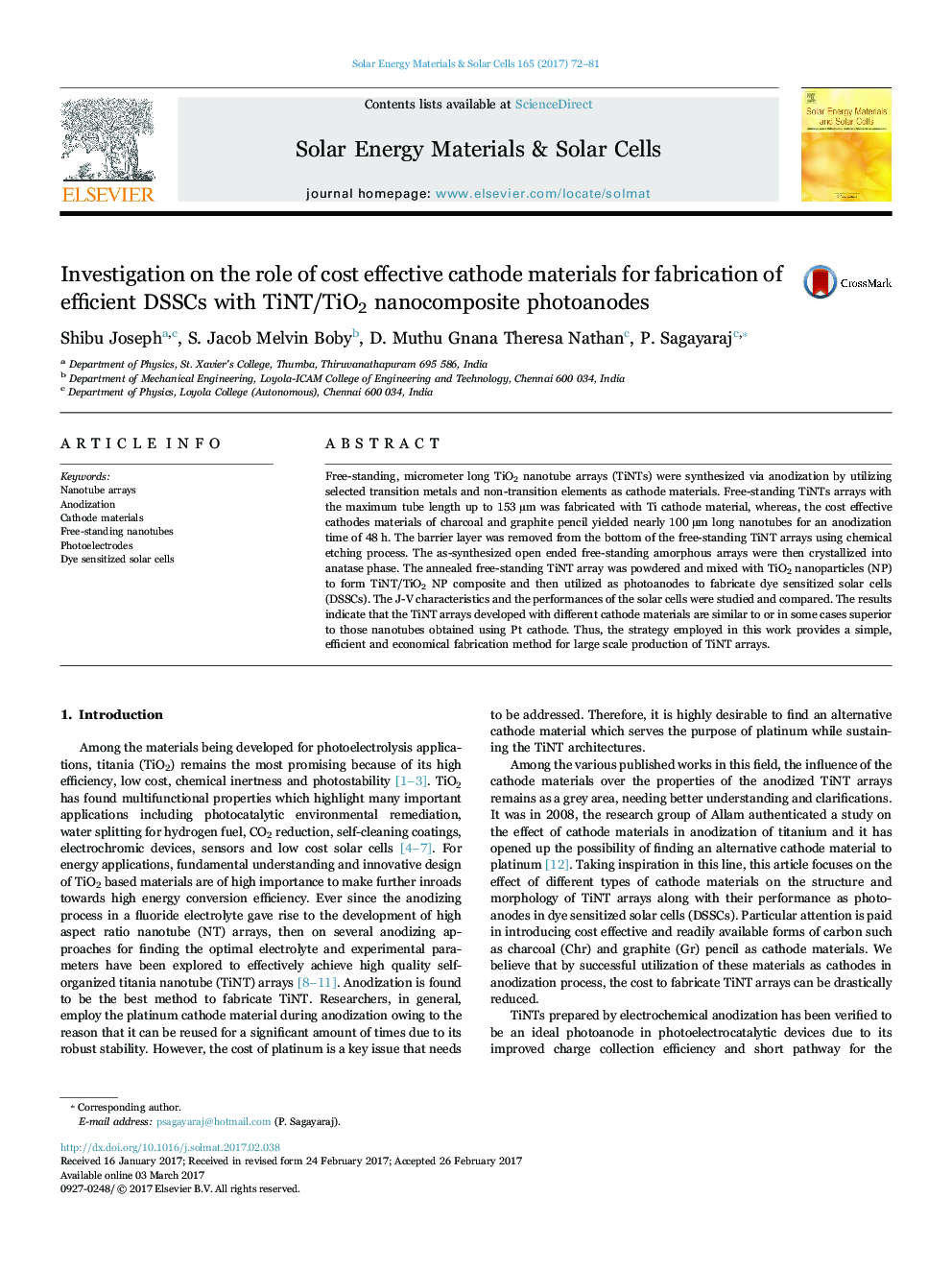| Article ID | Journal | Published Year | Pages | File Type |
|---|---|---|---|---|
| 6457140 | Solar Energy Materials and Solar Cells | 2017 | 10 Pages |
â¢The influence of cost effective cathode materials for anodization was investigated.â¢Free-standing TiNT arrays with optimum length were fabricated.â¢Composite photoanodes were fabricated with powdered TiNT and TiO2 NP.â¢DSSCs exhibited conversion efficiency exceeding 6% with photoanodes fabricated with charcoal and graphite.
Free-standing, micrometer long TiO2 nanotube arrays (TiNTs) were synthesized via anodization by utilizing selected transition metals and non-transition elements as cathode materials. Free-standing TiNTs arrays with the maximum tube length up to 153 µm was fabricated with Ti cathode material, whereas, the cost effective cathodes materials of charcoal and graphite pencil yielded nearly 100 µm long nanotubes for an anodization time of 48 h. The barrier layer was removed from the bottom of the free-standing TiNT arrays using chemical etching process. The as-synthesized open ended free-standing amorphous arrays were then crystallized into anatase phase. The annealed free-standing TiNT array was powdered and mixed with TiO2 nanoparticles (NP) to form TiNT/TiO2 NP composite and then utilized as photoanodes to fabricate dye sensitized solar cells (DSSCs). The J-V characteristics and the performances of the solar cells were studied and compared. The results indicate that the TiNT arrays developed with different cathode materials are similar to or in some cases superior to those nanotubes obtained using Pt cathode. Thus, the strategy employed in this work provides a simple, efficient and economical fabrication method for large scale production of TiNT arrays.
Graphical abstractDownload high-res image (262KB)Download full-size image
